Gymnadenia borealis
was first described as a variety of G. conopsea
in 1918 by Druce from Cumbria, England but was subsequently
reclassified
as a full species in 1997 by Bateman, Pridgeon and Chase, an opinion
that was not at the time widely accepted. Its
name refers to the boreal zone of northern Europe though as far as is
known at the present time, this species is restricted to the United
Kingdom where it's
commonly known as the Heath Fragrant Orchid. Here it is found primarily
in the north of England and Scotland, though very small populations may
also be found further south in the New Forest and Ashdown Forest.
Dactylorhiza maculata was first described from Uppsala, Sweden and is a widespread and familiar denizen of the heathlands and acid bogs of norhthern Europe where it is known as the Heath Spotted Orchid.
Both G. borealis and D. maculata prefer damp meadows and fens on acidic to neutral substrates, a choice of growing conditions that is regarded as one of the key differentiators between them and the very similar G. densiflora and D. fuchsii respectively, which are primarily orchids of alkaline soils.
The hybrid of the two species has been named as Dactylodenia evansii (Druce) Stace 2009 and is in most cases readily identified by a combination of the obvious lip marking inherited from its Dachtylorhiza parent and the elongated spur, typical of Gymnadenia. The pictures are from the New Forest in southern England, dating from the beginning of July.
Dactylorhiza maculata was first described from Uppsala, Sweden and is a widespread and familiar denizen of the heathlands and acid bogs of norhthern Europe where it is known as the Heath Spotted Orchid.
Both G. borealis and D. maculata prefer damp meadows and fens on acidic to neutral substrates, a choice of growing conditions that is regarded as one of the key differentiators between them and the very similar G. densiflora and D. fuchsii respectively, which are primarily orchids of alkaline soils.
The hybrid of the two species has been named as Dactylodenia evansii (Druce) Stace 2009 and is in most cases readily identified by a combination of the obvious lip marking inherited from its Dachtylorhiza parent and the elongated spur, typical of Gymnadenia. The pictures are from the New Forest in southern England, dating from the beginning of July.
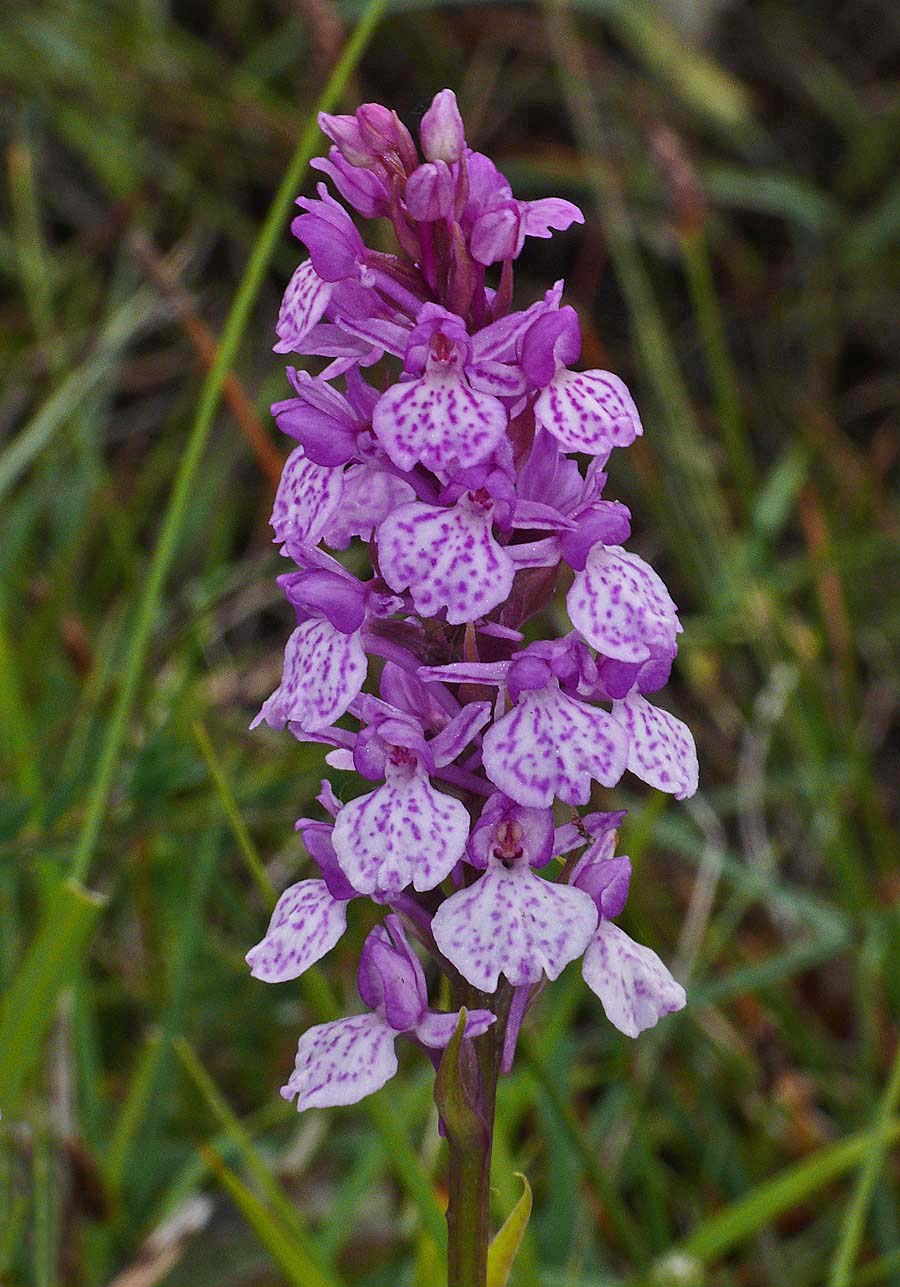
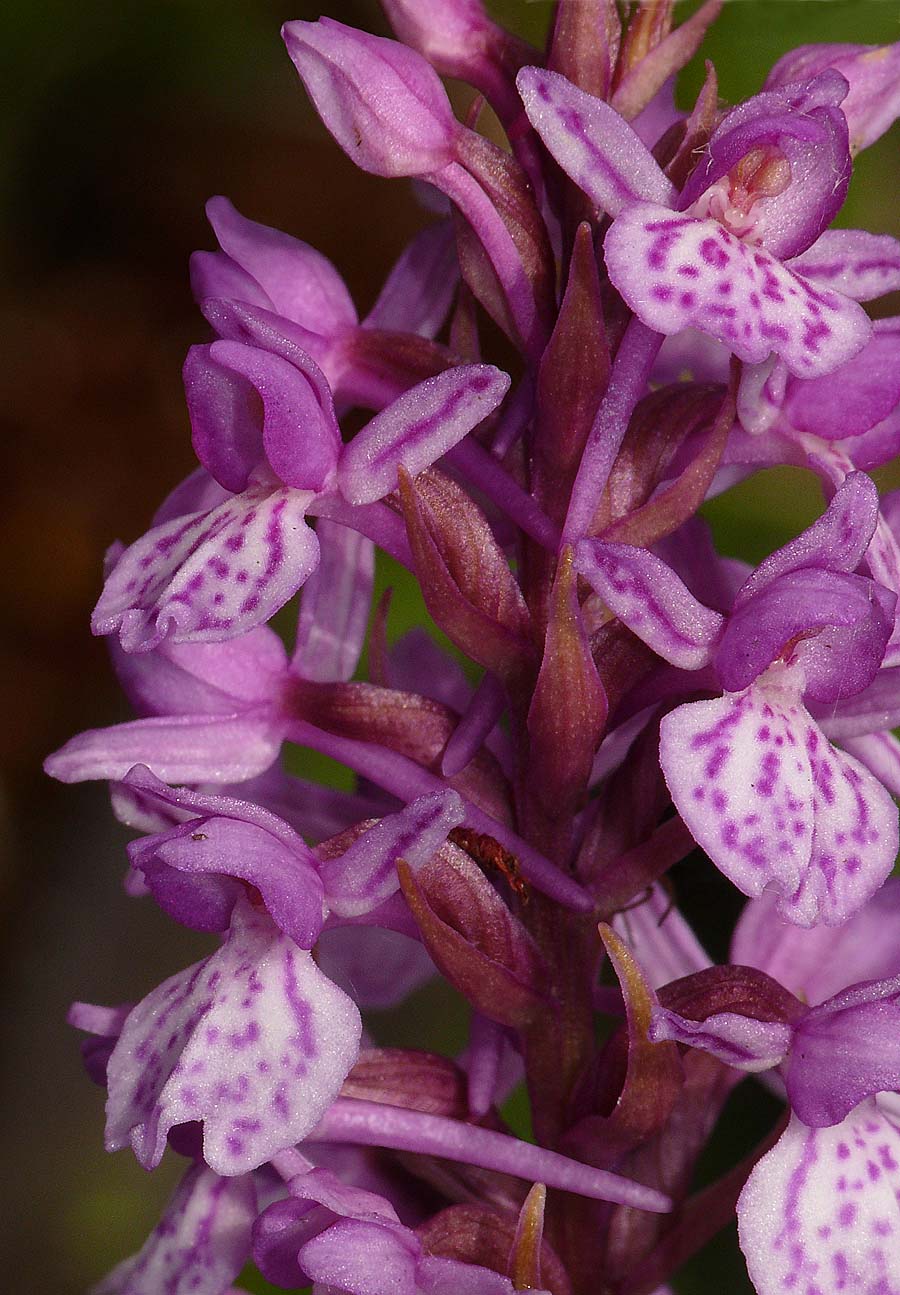
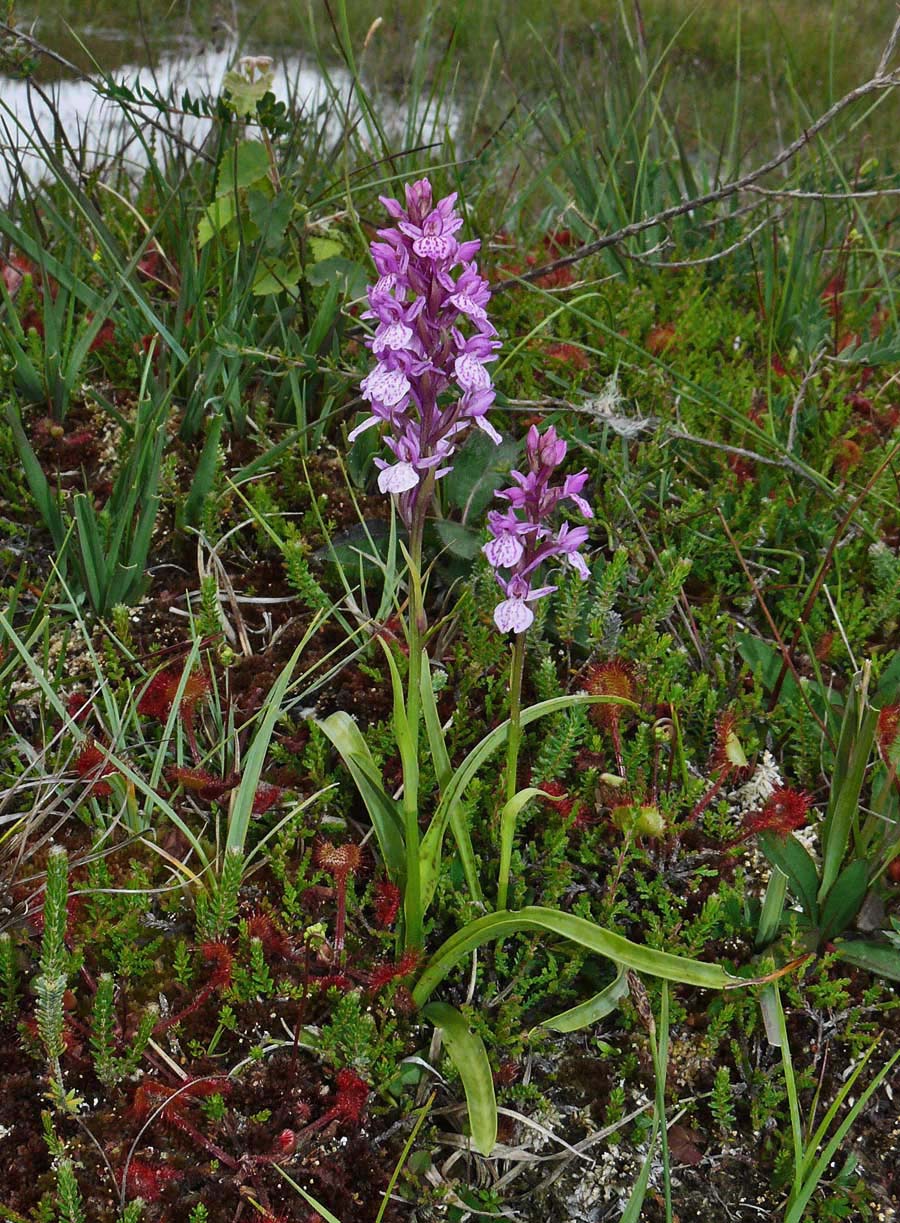
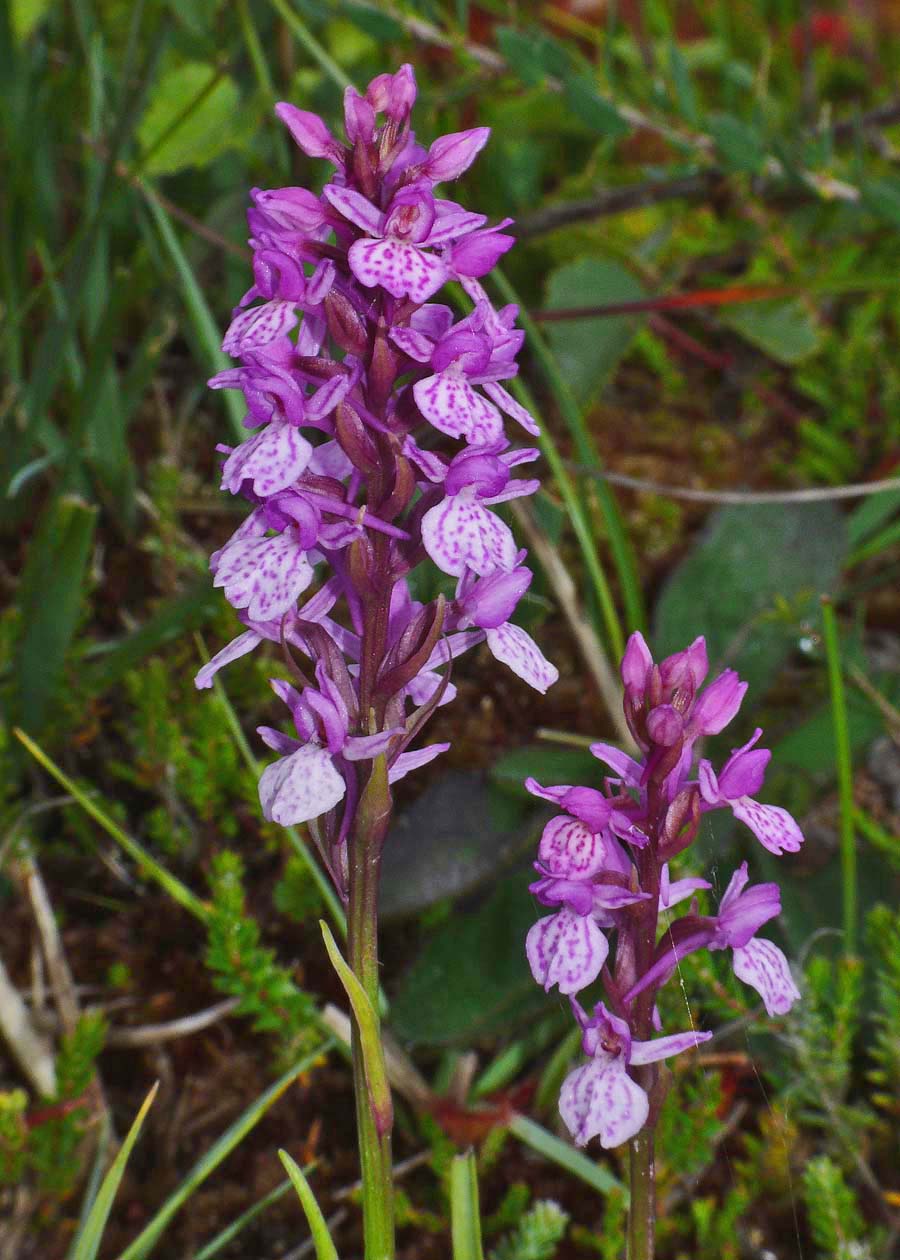
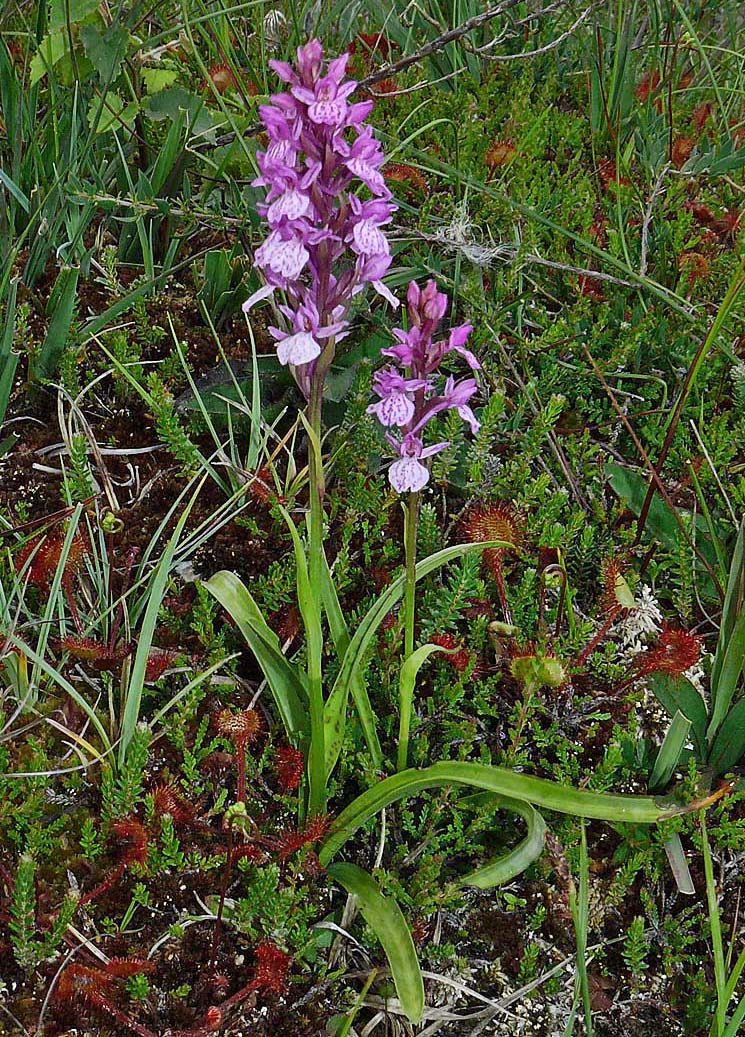
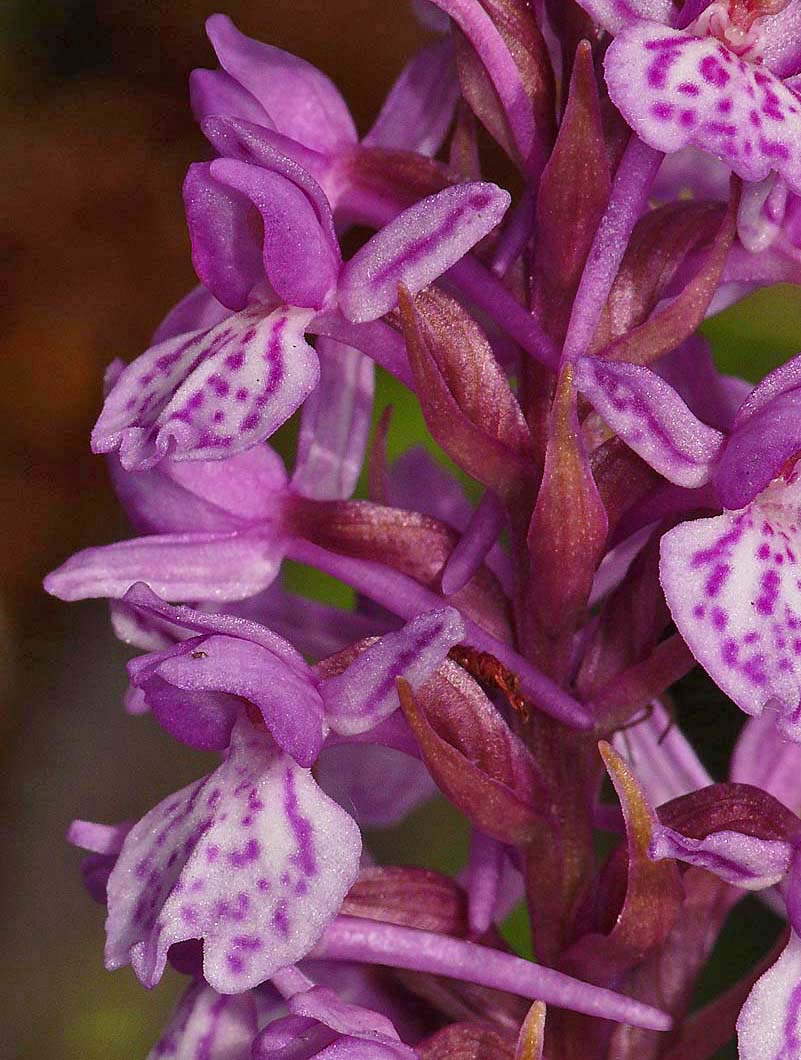

.